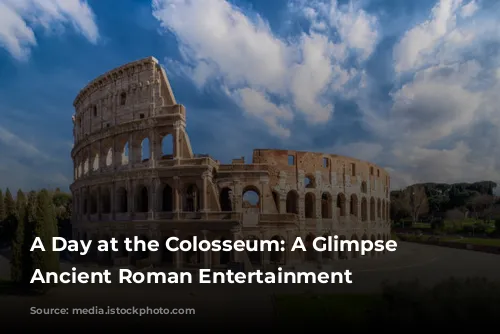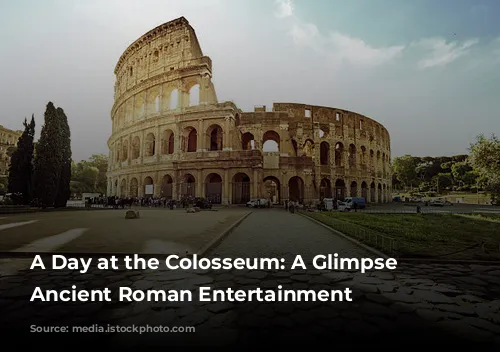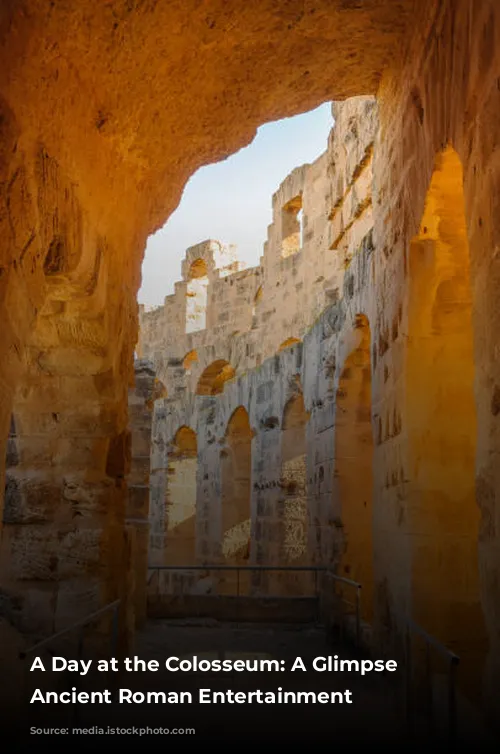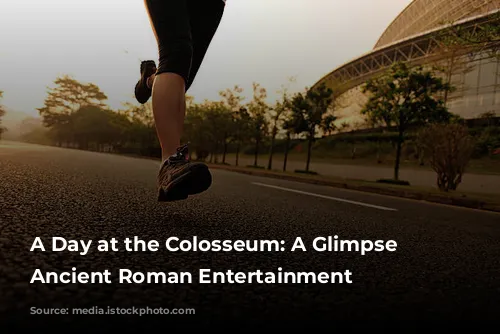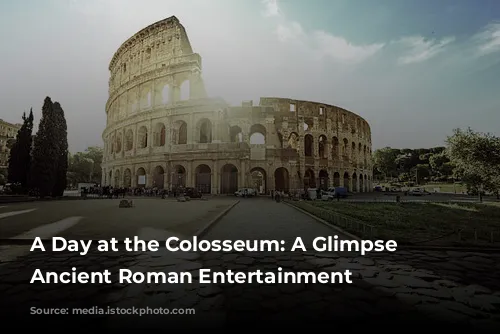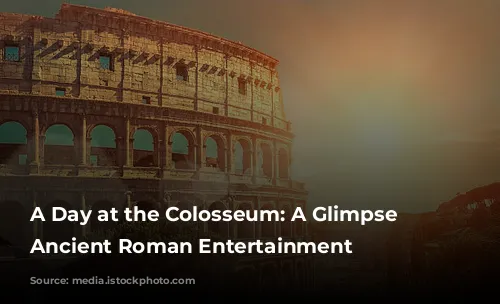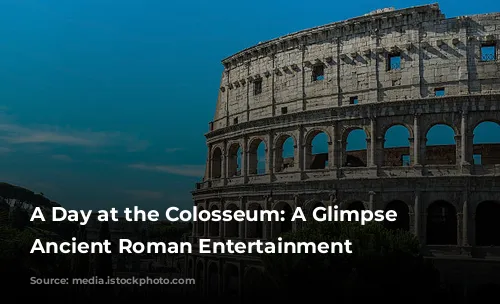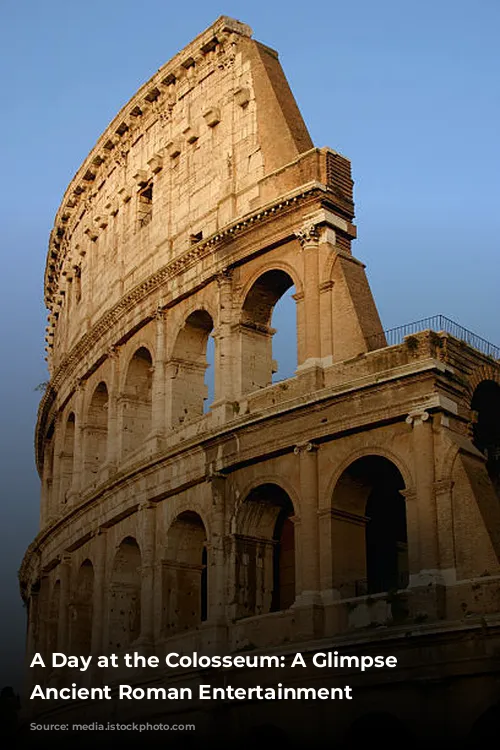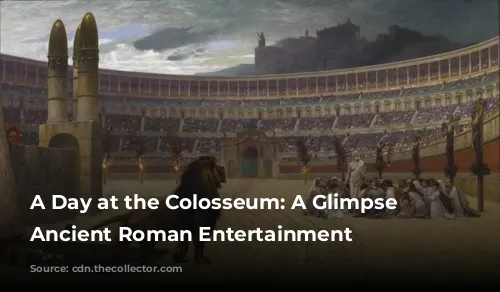The Colosseum, a symbol of ancient Roman grandeur, was more than just a building; it was a stage for thrilling spectacles that captivated the masses. It was during the reign of the Flavian emperors – Vespasian, Titus, and Domitian – that this iconic structure rose from the ground. Today, let’s journey back in time and experience a typical day at the Colosseum, immersing ourselves in the excitement and drama of its events.

The Pompa Circenses: A Grand Procession
The day began with the Pompa Circenses, a spectacular procession that set the stage for the day’s entertainment. This parade, organized by a magistrate, was a visual feast for the eyes, a prelude to the gladiator fights, religious festivals, or chariot races.
Imagine a vibrant spectacle of young nobles on horseback, leading the way, followed by youthful infantrymen in training, their faces etched with anticipation. Next came the athletes and charioteers, their presence a symbol of the day’s athletic pursuits. The music, a blend of ancient melodies, filled the air as dancers, adorned in Greek Pyrrhic attire, their movements graceful and energetic, captivated the audience.
The procession continued with the satyrs and sileni, their playful antics and colorful costumes adding a touch of levity to the serious proceedings. The final touch of grandeur was provided by men carrying golden bowls and perfumes, followed by statues of gods carried on litters, their presence a reminder of the divine power that presided over the games.
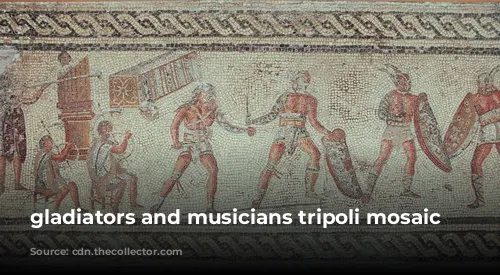
The Venationes: A Thrilling Encounter with Beasts
The Venationes, or animal fights, were a highlight of the day, offering a glimpse into the raw power of nature. These contests pitted beasts against each other or man against beast, providing a spectacle of adrenaline and excitement.
The men involved were often condemned criminals, prisoners of war, or trained hunters, their fates hanging in the balance. These contests, introduced by Roman general Marcus Fulvius Nobilior in the second century BCE, were inspired by Alexander the Great’s penchant for animal fights, a tradition that had become deeply ingrained in Roman culture.
The popularity of the Venationes led to a surge in the variety and number of exotic animals, including bears, bulls, lions, crocodiles, and panthers. These beasts, trained for fights and tricks, were a source of both awe and fear, although some exhibitions ended tragically, with the animal master falling prey to his own creation. Wolves, however, were treated differently, their religious significance preventing their participation in the Venationes.
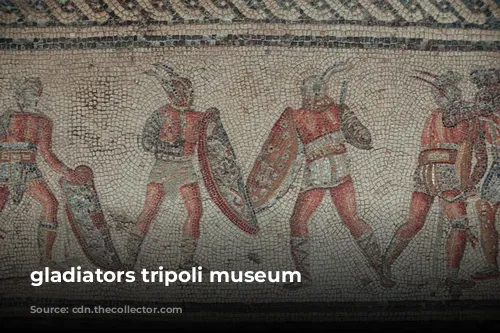
More Bread and Circuses: The Ludi Meridiani
The Ludi Meridiani, or mid-day executions, was a somber yet significant event, held at noon, between the Venationes and the gladiatorial matches. These executions, a stark reminder of Roman power, involved the public killing of condemned criminals and Christians.
Damnatio ad Bestias, a method of execution using beasts, was a popular practice in the Roman Empire, dating back to the Republican Period. Roman mosaics provide a glimpse into the creativity, or perhaps brutality, of these executions, showcasing a variety of wild animals used to end the lives of those who had violated the law.
The condemned were sent into the arena naked or partially clothed, defenseless against the predators unleashed upon them. They were heavily restrained, making escape impossible. The Bestiarii, specialized executioners, ensured the animals were ready to attack, their presence a chilling reminder of the fate awaiting the condemned.
Other methods of execution included forced combat between condemned criminals and theatrical reenactments of mythical episodes, known as fatal charades. The Ludi Meridiani, a grim spectacle, was a powerful tool for social control, a public display of Rome’s dominance over life and death.
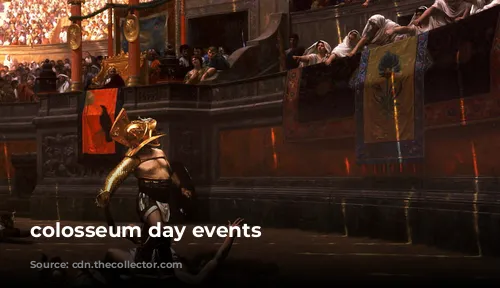
Closing the Festivities: Munera Gladitoria
The Munera Gladitoria, or gladiatorial games, were the climax of the day, the ultimate entertainment for the Roman crowds. The gladiators, trained warriors, fought in pairs, their skills and weaponry matched to create thrilling and dramatic battles. The goal was not merely to fight but to provide a suspenseful and extended duel, keeping the audience on the edge of their seats.
The gladiator institution evolved over time, starting with prisoners of war who brought their own fighting styles and weapons. Eventually, these fighting styles were standardized, categorized into different armatures, each with a distinct name and weaponry. These included the Samnites, Thraex, Murmillo, and the Retiarius, each representing a different fighting style and wielding distinct weapons.
The Samnites, named after the Samnite warriors Rome defeated in the early republic, were the most heavily armed of the four main types. The Thracians, named after another of Rome’s adversaries, often fought in pairs against the Murmillones. The Murmillones, or fish men, wore helmets with a fish crest, armor with scales, and Greek-styled swords. Finally, the Retiarii, or net men, used fishing tools as weapons, lightly armored, their heads and legs exposed.
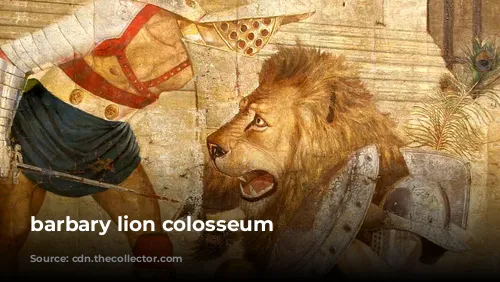
A Day at the Colosseum: The Order of the Munera
The Munera Gladitoria was a spectacle that unfolded in three parts. The prelude involved a battle with blunt weapons, similar to training weapons, a warm-up for the main event. The second part, the probatio armorum, was a test of the sharpness of the gladiators’ weapons, ensuring a fair and lethal fight. The final part was the actual combat, the main attraction of the day.
Tied matches were uncommon, the pressure to fight to a conclusion immense. The ideal outcome was a clear victory, a decisive submission by one gladiator over the other, achieved by disarming or immobilizing the opponent.
When a gladiator lost, he would acknowledge defeat by lowering his weapons and raising one finger in submission. The crowd, a sea of faces, would erupt in a cacophony of cries, demanding the victor’s mercy or the loser’s death. The editor, the owner or organizer, would then make the final decision, guided by the roar of the crowd. The crowd’s will, a powerful force in Roman society, determined whether the loser would live or die, a reminder of the dynamic between the games and the people who witnessed them.
The Colosseum, a testament to Roman power, echoed with the cheers and jeers of the crowd, the clash of steel, and the roar of the beasts. It was a place where the Romans found their entertainment, their drama, and their sense of identity. The day at the Colosseum, a journey through ancient Roman entertainment, offered a glimpse into the heart of a civilization, its triumphs, its struggles, and its relentless pursuit of spectacle.
